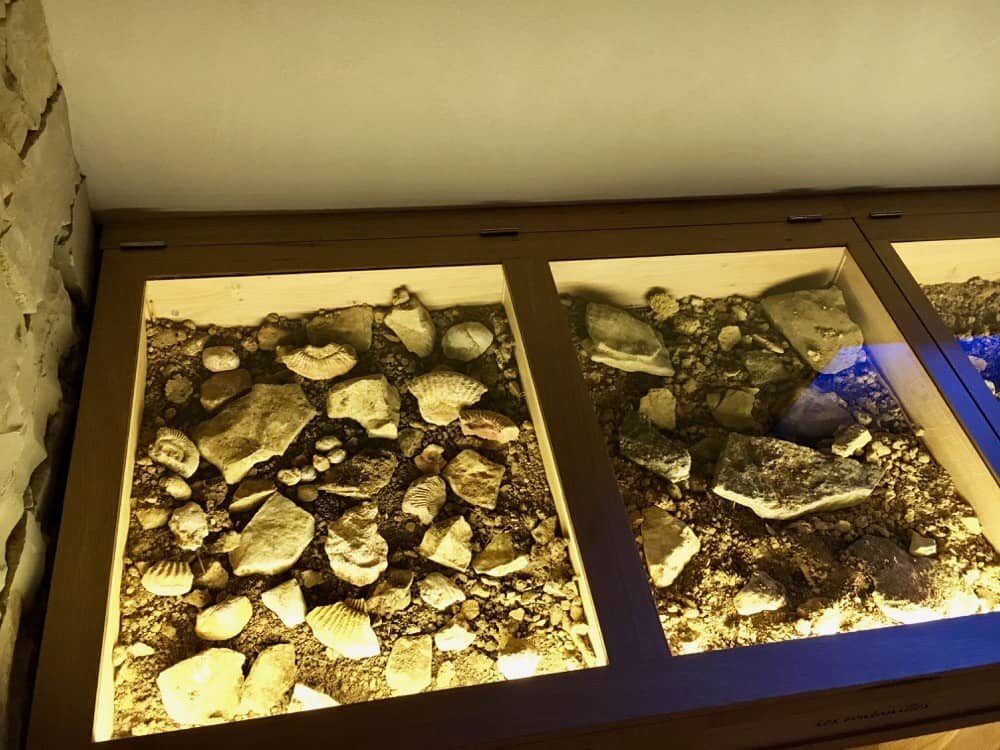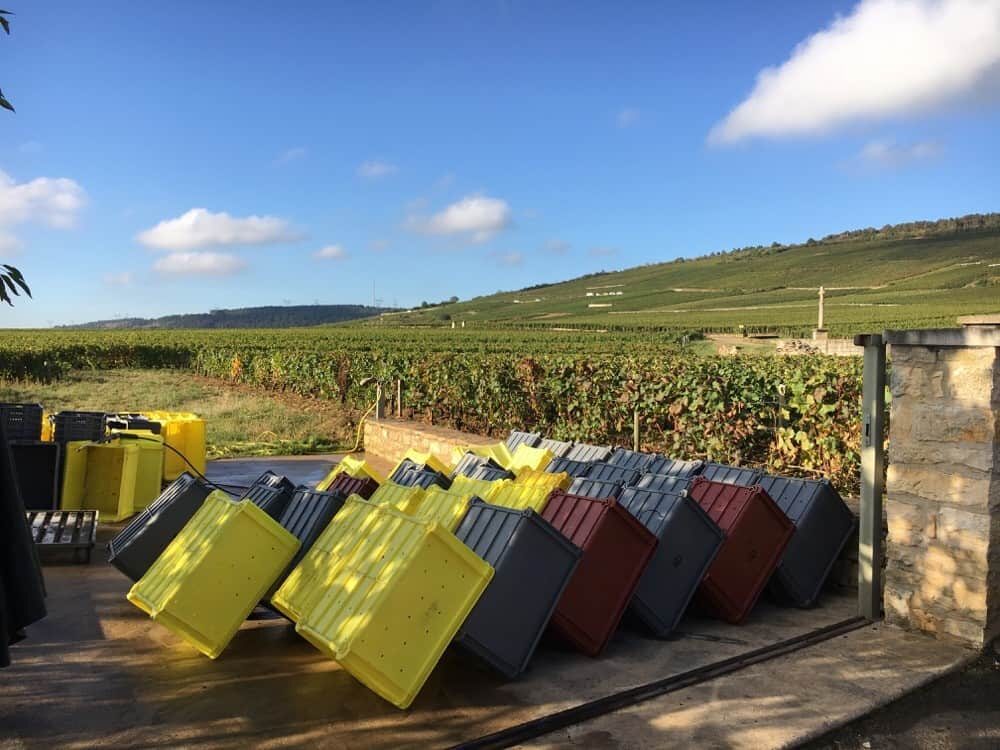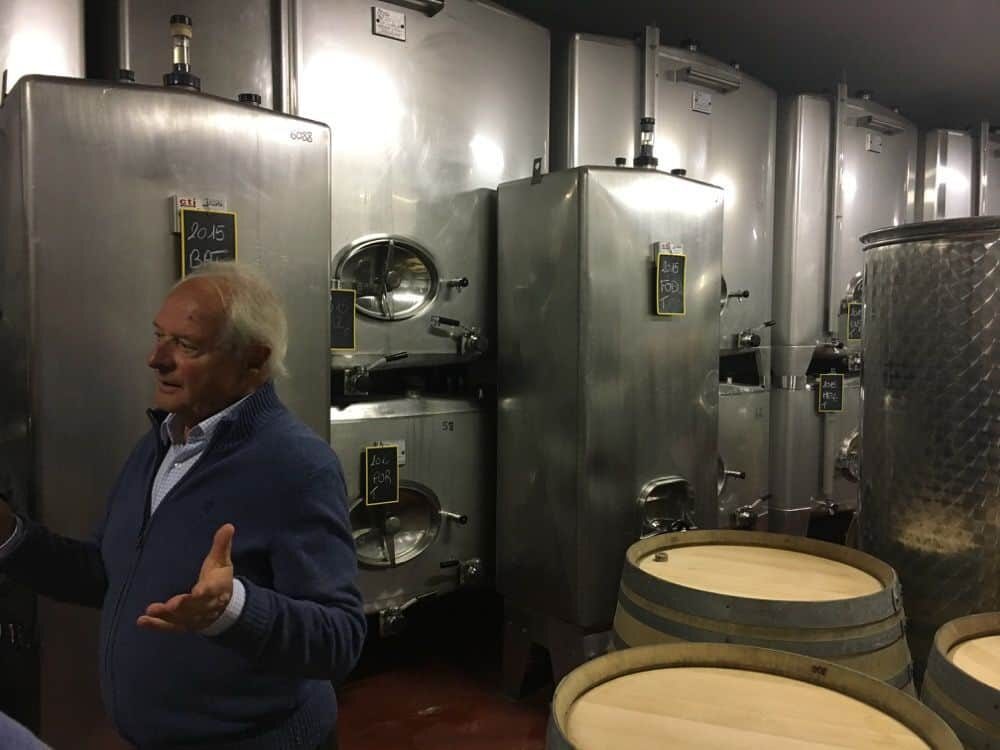I was fortunate to take a nearly two-week vacation recently, a trip that included a week in France.
My wife and I had a chance to, I guess, do a number of “gemba visits” at some wineries in the Burgundy, Chablis, Champagne, and Alsace regions of the country last week.
I've blogged before about winery visits in California and Oregon before. As far as I know, there's nobody who would say they are a “Lean winery” (although there is a Six Sigma Ranch and Winery that I blogged about before that does use that methodology, interestingly enough).
Modern wine making has been taking place for hundreds of years in France, if not almost a thousand years, with practices started by monks. The total history dates back more than 2600 years (via Wikipedia).
There's probably not much wild innovation taking place in winemaking these days. They seem to have things pretty well figured out. That, and many of the factors that affect the quality of wine are either impossible to change (the composition, layers, and depth of soil and rock beneath the surface and the terrain and weather). Steeper slopes tend to produce higher-quality wine because of the better drainage that occurs when it rains.
Here are a few shots of the various slopes and terrains (and there's a point about Lean coming if you want to just scroll past quickly).



Winemaking is a craft and an art (there is some science too, of course) and the best are driven to keep getting better, even if incrementally.
One winery we visited in the Burgundy region had a tour that was led, in part, by one of the brothers who run the winery. Some of the wineries have been owned and operated for up to 16 generations (that was the longest chain of ownership we heard of during our visits.
After one of his employees walked us through some of their vineyard plots, Patrick led us through parts of the “value stream” beyond the vineyards. Harvest was just being completed in most areas we visited, so there was a lot of activity, including the initial pressing and fermentation of grapes, which leads to some amazing smells (and risk of breathing in too much carbon dioxide, if you're not careful).
Here are some photos (not all from the same winery):




Patrick explained how they are always looking to get better in different ways. It reminded me of the “Kaizen” philosophy.
He said, as I tweeted:
Heard from a winery owner today: "If you improve 1% there & 1% there & 1% there, you improve every year, it's better than nothing." #Kaizen
— Mark Graban (@MarkGraban) October 3, 2016
He's right. It's better than nothing. If you improve 1% a year, there isn't much exponential effect — 1% annual improvement over 10 years is just over 10% improvement altogether.
But, you could improve 1% in lots of different areas. He didn't elaborate, but maybe you spill 1% less wine than the year before. Or you pick 1% fewer bad grapes than the previous year. Can the taste of the wine be 1% better? That's probably more likely than suddenly going from a 82 point-rated wine to a 97 overnight.
He seemed pretty sincere and adamant about the idea of always getting better.
On the way home, I rewatched the great movie “Jiro Dreams of Sushi” which has that same theme. If you're already great at something, you can still push yourself to get better and not stay stagnant. I'll blog about the movie soon, or you can read John Hunter's post about it.
Now, in healthcare… maybe things aren't already figured out. We need to improve more than 1% a year, since our current state is pretty far from ideal.
That's the bad news… we NEED to improve that drastically.
The good news is that we CAN improve in healthcare.
We can get 30% improvement in lab turnaround times, 50% improvement in radiology waiting times, 95% reductions in central line infections. It's not just Kaizen, or continuous improvement.
Sometimes, we have to reinvent things. That's where the word “Kaikaku” (radical improvement) comes into play. There's where teams have Rapid Improvement Events to radically redesign a process, rather than just tweaking it a little every day. “Lean Design” or “3P” methodologies can help us reinvent or redesign workflows and physical spaces.
I'm a big proponent of the “Kaizen” approach in healthcare. But, it's most useful AFTER we have reinvented how things are done, keeping the good practices and changing the bad.
Most hospitals are not Toyota. Toyota isn't perfect, but they have a pretty darned good process at this point in their evolution. But, they still take steps to reinvent how their factories work, while sticking with key Lean / TPS principles.
It's said that Toyota has the mindset of farmers, because they have rural roots as a company. Read an excerpt from Jeff Liker about this. Farmers think for the long term. They understand annual cycles and how to improve over time. Many companies are more like hunters, looking for a quick kill to get food today… worrying about tomorrow tomorrow.
Most hospitals aren't a world-class French winery, who already has a pretty good process and great results.
But, the best are always driven to improve. Always. Continuously.
Please scroll down (or click) to post a comment. Connect with me on LinkedIn.
Let’s build a culture of continuous improvement and psychological safety—together. If you're a leader aiming for lasting change (not just more projects), I help organizations:
- Engage people at all levels in sustainable improvement
- Shift from fear of mistakes to learning from them
- Apply Lean thinking in practical, people-centered ways
Interested in coaching or a keynote talk? Let’s talk.
Join me for a Lean Healthcare Accelerator Trip to Japan! Learn More














[…] my way back from vacation, I watched the movie “Jiro Dreams of Sushi” for a second time. I first watched it in […]
Comments are closed.